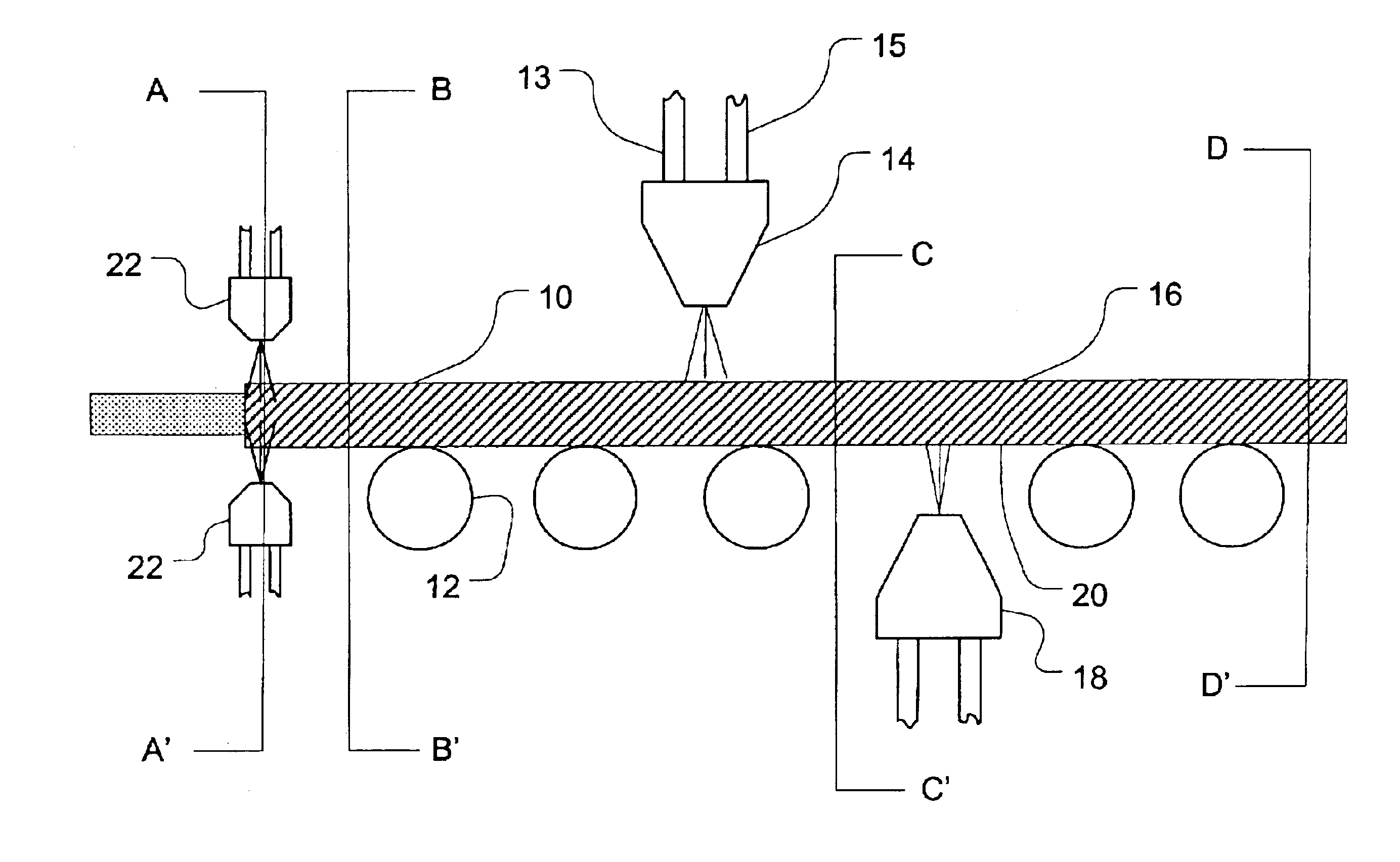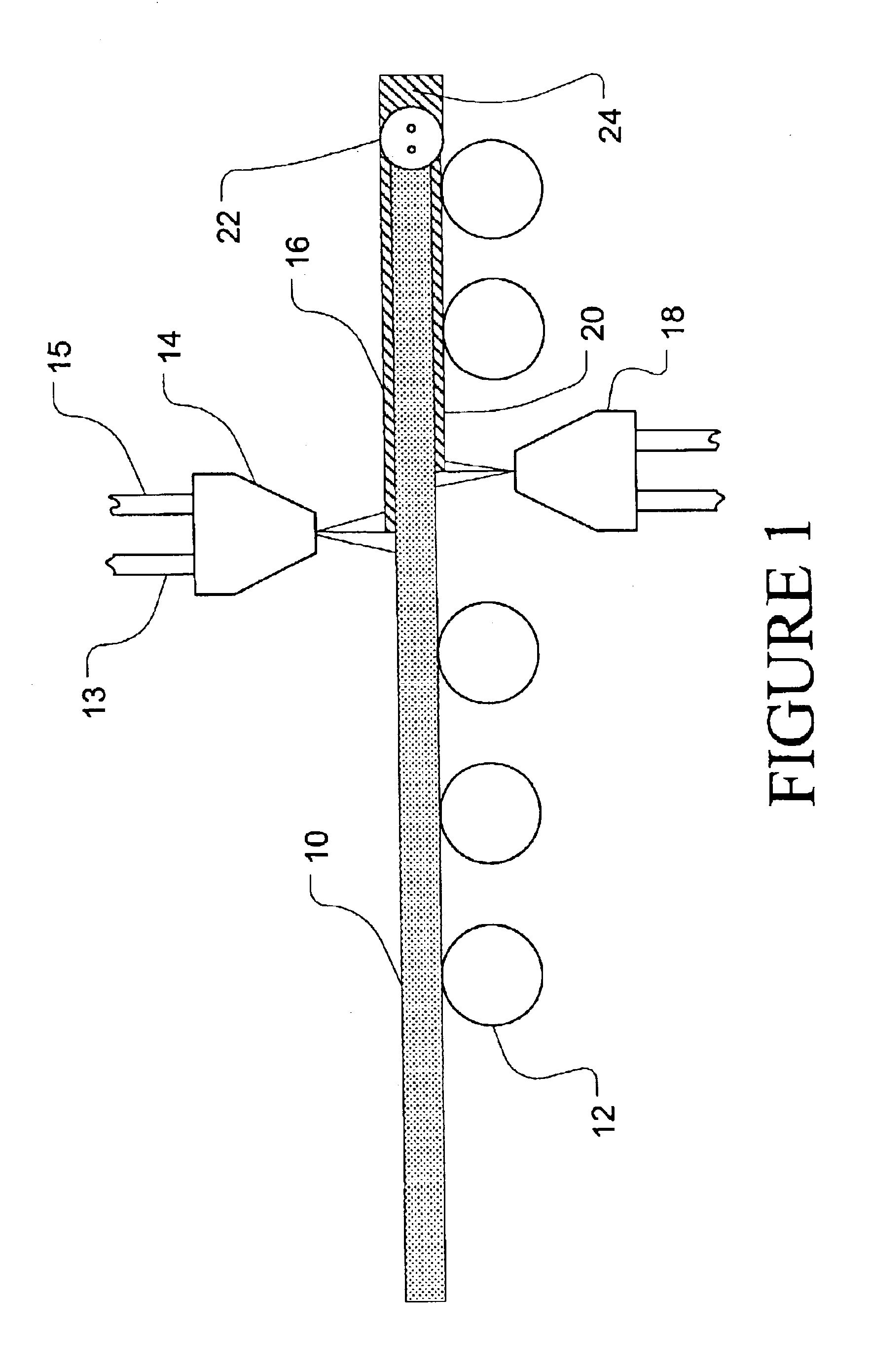Method and apparatus for melt-blown fiber encapsulation
- Summary
- Abstract
- Description
- Claims
- Application Information
AI Technical Summary
Benefits of technology
Problems solved by technology
Method used
Image
Examples
example 5
[0043]Twenty-foot (6.1 m) long and 15″ (38 cm) wide R-19 fiber batt was used. The first major surface (top) was coated with melt-blown polypropylene fibers at a rate of about 20 grams / m2 using the same conditions as indicated above for Example 1 and the two minor (side) surfaces were coated with polypropylene fibers sprayed from small hot melt nozzles at a rate of about 20 grams / m2. A vapor retarding layer, specifically a 1.0 mil (25.4 μm) thick polyethylene film, was then bonded to the remaining major surface (bottom) using a pressure sensitive hot melt adhesive (Evans Adhesive Corporation, Columbus, Ohio, product # 07505). The adhesive was applied as 3 continuous stripes, one at center and two along the edges. Each stripe was about 1 inch (2.5 cm) wide, and the glue application rate for each stripe was about 0.2 grams per linear foot (0.65 grams / meter). The resulting product was a faced fiber batt insulation material having a non-woven polypropylene fiber layer on the remaining su...
example 6
[0044]Twenty-foot (6.1 m) long and 15″ (38 cm) wide R-19 batt was used. The two major surfaces (top and bottom) were covered, with a melt blown polypropylene coating applied at a rate of about 20 grams / m2 using the same condition as indicated above for Example 1. The two side surfaces were then spray coated with an EVA polymer (Henkel, product # 80-8330) using small hot melt nozzles. Each of the side surfaces was about 6.5″ (16.5 cm) wide (R19 batt thickness), and the EVA application rate was about 1.3 grams per linear foot for a coating weight of about 2.4 grams / ft2 (25.8 grams / M2). The resulting product was a faced fiber batt insulation material having an encapsulating layer of a non-woven polymeric fibers alternating between regions of polypropylene and EVA, illustrating the ability to “tune” the encapsulating layers on various surfaces to customize the appearance and performance of the resulting insulation product while improving handleability and reducing fiber and dust generat...
PUM
| Property | Measurement | Unit |
|---|---|---|
| Length | aaaaa | aaaaa |
| Density | aaaaa | aaaaa |
| Density | aaaaa | aaaaa |
Abstract
Description
Claims
Application Information
 Login to View More
Login to View More - R&D
- Intellectual Property
- Life Sciences
- Materials
- Tech Scout
- Unparalleled Data Quality
- Higher Quality Content
- 60% Fewer Hallucinations
Browse by: Latest US Patents, China's latest patents, Technical Efficacy Thesaurus, Application Domain, Technology Topic, Popular Technical Reports.
© 2025 PatSnap. All rights reserved.Legal|Privacy policy|Modern Slavery Act Transparency Statement|Sitemap|About US| Contact US: help@patsnap.com



